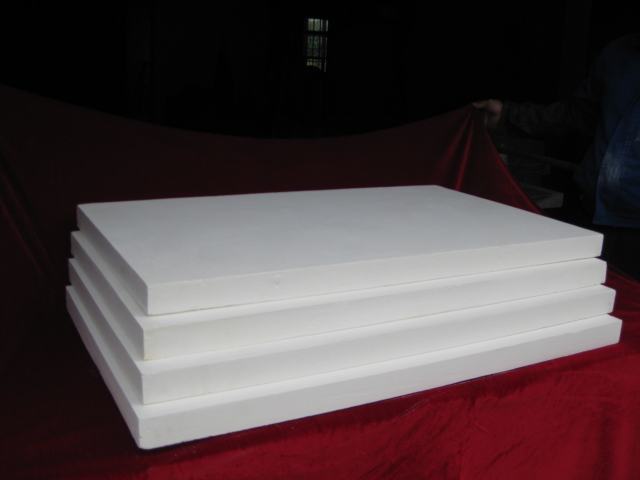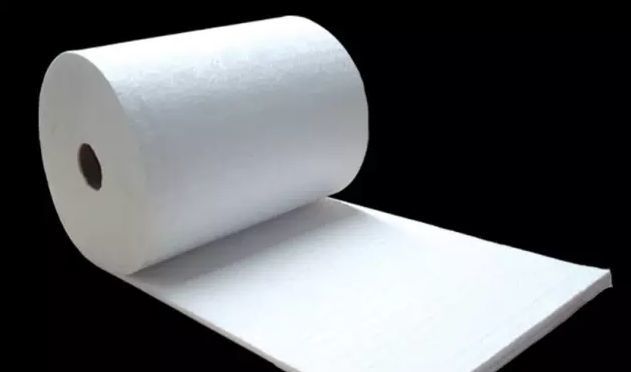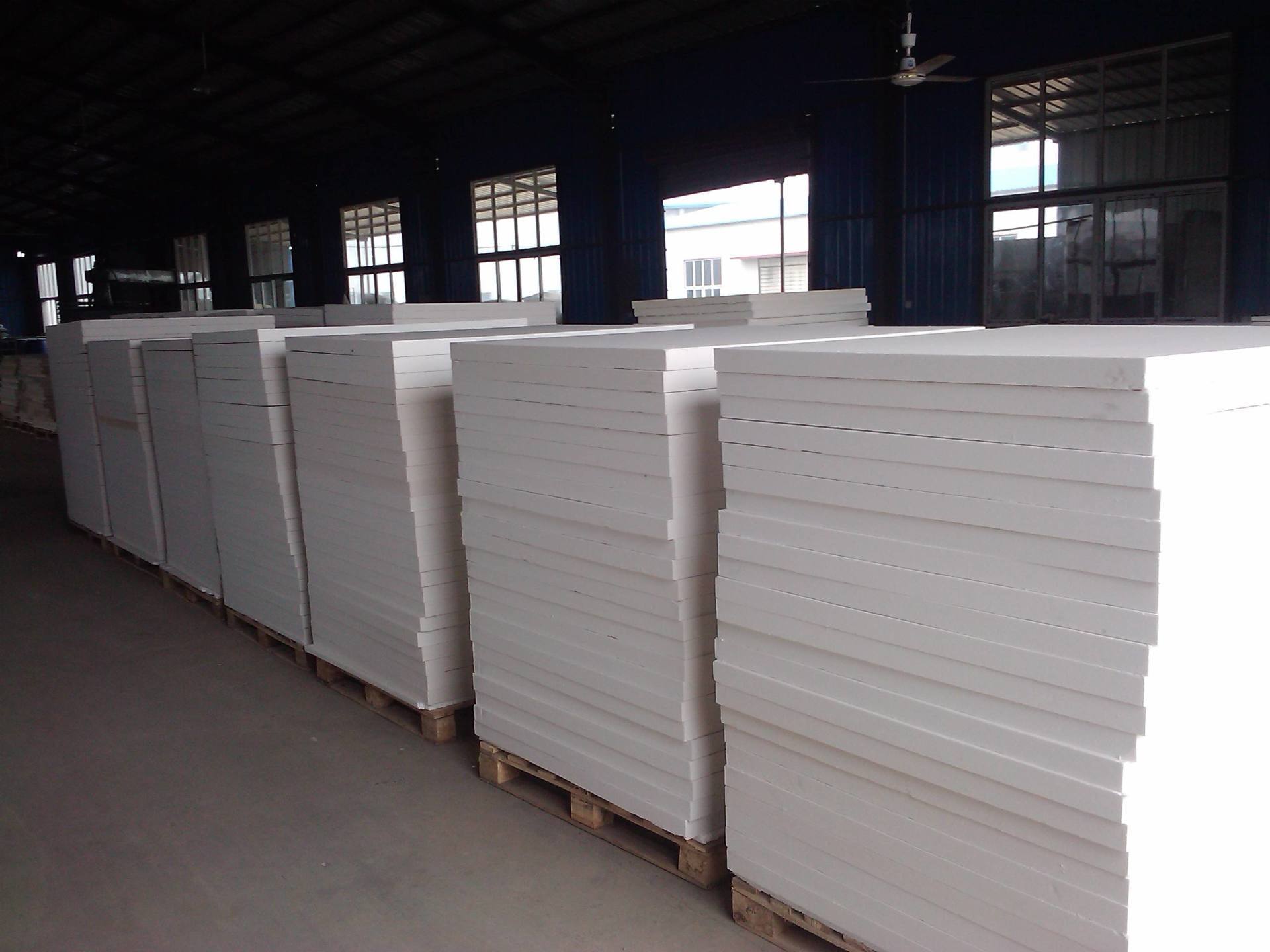What is the purpose of alumina fiber
Release time:
2021-03-31 10:54
Regarding, many people may already know what it is and what it can do. But what? Do you know what it is used for? Today, let me take you to learn about the new material of alumina fiber!

Alumina fiber is one of the latest ultra-light high-temperature thermal insulation materials at home and abroad. It uses the high-tech "sol-gel" method to make soluble aluminum and silicon salts into a colloidal solution with a certain viscosity. Centrifugal spun silk into fiber embryo body, and then through processes such as dehydration, drying and medium-high temperature heat treatment and devitrification, it is transformed into Al-Si polycrystalline fiber. Its main crystal phase is mainly corundum phase and a small amount of mullite phase. The chemical composition is Al2o395%+Sio25%, the fiber diameter is 3-7um, the monofilament length is 10-150mm, the appearance is white, smooth, soft, and elastic, like absorbent cotton, it integrates the characteristics of crystal material and fiber material, and the use temperature is up to 1450℃—1600℃, melting point of 1840℃, good heat resistance stability, thermal conductivity is 1/6 of ordinary refractory bricks, bulk density is only 1/25, energy saving rate is 15-45%.

Application range of alumina fiber:
The thermal conductivity, heating shrinkage and heat capacity of alumina fiber are low. The long-term use temperature is 1300~1400°C, which is higher than ordinary aluminum silicate fiber (1000~1100°C). It has good chemical stability and can be used in acidic environment, oxidizing atmosphere, reducing atmosphere and vacuum conditions. It also has certain corrosion resistance to alkaline environment, but it is easily corroded by lead vapor and vanadium pentoxide. This kind of fiber is mainly used as heat insulation lining of various heat treatment furnaces, ceramic firing kilns, cracking furnaces and combustion furnaces in petrochemical industry, etc., with remarkable energy-saving effect. For intermittent kilns, it can also greatly increase product output. In addition, it can be used as a catalyst carrier in the chemical industry, called a carrier. Thermal insulation materials for nuclear reactors and space shuttles, reinforcement materials for light alloys, etc.
Industrial high temperature furnace field: significant energy saving effect
Short fiber has outstanding high temperature resistance, and is mainly used as a heat insulation refractory material, and is used as a heat insulation material for body protection lining in metallurgical furnaces, ceramic sintering furnaces or other high temperature furnaces. Because of its low density. With good thermal insulation and small heat capacity, it can not only reduce the quality of the furnace body, but also improve the temperature control accuracy, and the energy-saving effect is significant. The energy-saving effect of alumina fiber used in high-temperature furnaces is better than that of ordinary refractory bricks or high-temperature coatings. The energy saving is much greater than the heat loss. The reason is not only the reduction of heat dissipation loss, but also the strengthening of the furnace gas to the furnace wall. Convective heat transfer enables the furnace wall to obtain more folded heat, which is then transferred to the material through the national emblem, thereby increasing the heating speed and production capacity of the material.
Environmental protection and recycling fields: applications have bright spots
Alumina fiber can be used in the fields of environmental protection and recycling technology due to its good chemical resistance. For example, the equipment for incineration of electronic waste, after years of operation, alumina fiber still shows its excellent corrosion resistance to various harmful substances in the furnace, and can be used as a ceramic lining on automobile exhaust equipment. Its characteristic is stable structure. Saffil alumina fiber can be used for aluminum alloy plugs. Its advantage is that it expands less when the temperature rises, which is about 25% less than pure alloy, so that the piston and cylinder are in good agreement and can save fuel.
Reinforced composite materials: obvious performance advantages
Because the alumina fiber has good wettability with the metal matrix and the interface reaction is small, the mechanical properties, wear resistance and hardness of the composite material are improved, and the thermal expansion coefficient is reduced. Alumina fiber reinforced metal matrix composite materials have been used in automobile piston groove parts and rotary gas compressor blades. In addition, because the fiber is well bonded to the resin matrix, it has greater elasticity than glass fiber and higher compressive strength than carbon fiber, so alumina resin composite materials are gradually replacing glass fiber and carbon fiber in some areas. Especially in the field of cultural and sports goods, it can be made into high-strength fishing poles, golf balls, snowboards, tennis rackets, etc. of various colors.

Alumina long fiber reinforced metal matrix composite materials are mainly used in high-load mechanical parts, high-temperature and high-speed rotating parts, and high-functional components with lightweight requirements, such as automobile connecting rods, transmission rods, brake pads and other parts and helicopter transmission Devices, etc. Recently, some researchers have begun to use it for the lining of thermonuclear reactor cooling and heat exchange devices.
Having said that, do you have a preliminary understanding of fiber? This new type of material is now showing its increasingly important position in the market. It is foreseeable that in the near future, it will definitely show its talents in various industries!
Related News
What are the main problems with aluminum silicate fiberboard?
Aluminum silicate fiberboard material is currently a high-performance insulation material. Aluminum silicate fiberboard has excellent properties such as light weight, low thermal conductivity, good heat resistance, aging resistance, easy bonding with other substrates, and no molten droplets during combustion. In Europe and the United States, it is widely used as an insulation material for building roofs, walls, ceilings, floors, doors and windows.
What are the characteristics of aluminum silicate fiberboard?
Aluminum silicate refractory fiber products are made by selective processing of pyroxene, high-temperature melting, blow molding into fibers, solidification molding, and different processes to produce blankets, blankets, boards, pipe sleeves, and other products. Aluminum silicate fiberboard has the characteristics of light weight, non combustible, moisture-proof and hydrophobic, low thermal conductivity
What is the structure of high alumina ceramic fiber board
1、 Shaped ceramic fiber furnace lining for high alumina ceramic fiber board The shaped ceramic fiber furnace lining of high alumina ceramic fiber board mainly refers to the furnace lining composed of formed refractory materials such as fiber blankets, fiber felt, fiber boards or fiber components. Structurally, it can be divided into two categories: layered structure and composite structure.
Analysis of alumina fiber properties and application prospects
Alumina fiber (polycrystalline mullite fiber), compared with carbon fiber, silicon carbide fiber and other non-oxide fibers, alumina fiber not only has high strength, high modulus, high temperature resistance and other excellent properties, but also has very good properties. High temperature oxidation resistance, corrosion resistance and electrical insulation. Alumina fiber (polycrystalline mullite fiber) can be compounded with resin, metal or ceramic to prepare high-performance composite materials, which are widely used in aviation, aerospace, military and high-tech fields.
What is the purpose of alumina fiber
Regarding, many people may already know what it is and what it can do. But what? Do you know what it is used for? Today, let me take you to learn about the new material of alumina fiber!
As one of the seven strategic emerging industries in my country and one of the ten key development areas of "Made in China 2025", the new materials industry is a key field in the "13th Five-Year Plan for National Science and Technology Innovation", which is the industrial basis for the transformation and upgrading of the entire manufacturing industry. .


